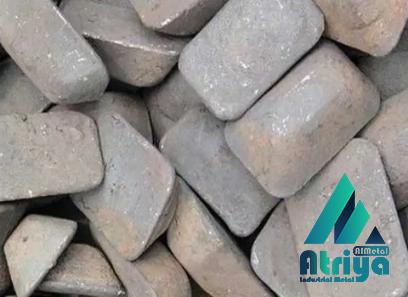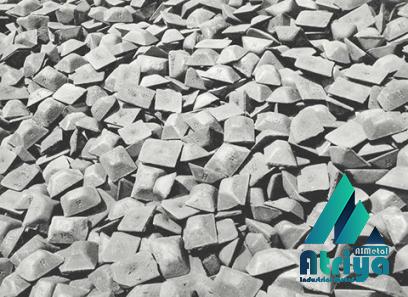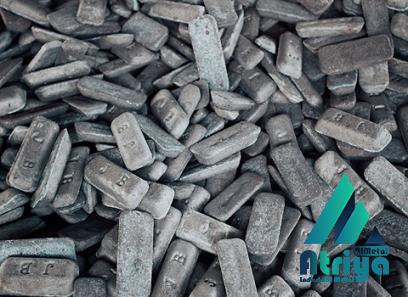The Role of Pig Iron in Modern Industries Introduction Pig iron, a key raw material in the steel industry, is an intermediate product derived from iron ore. Its versatile nature and inherent properties make it a crucial component in various industrial applications. This article delves into the significance of pig iron, highlighting its production, uses, and the economic impact it has across different sectors. Production Process Pig iron is primarily produced in blast furnaces, where iron ore, coke, and limestone are melted together at extremely high temperatures. This fusion results in the formation of a molten metal known as pig iron. Its name stems from the method of casting the molten material into molds resembling piglets. Versatile Applications Pig iron serves as the foundation for the production of steel, which is an indispensable material in countless industries. As such, pig iron finds application in sectors ranging from construction and automotive to machinery and infrastructure development. 1. Steel Production: Pig iron acts as the primary component in the steelmaking process. Its high carbon content makes it malleable, facilitating the removal of impurities like sulfur and phosphorus during the manufacture of steel.

.
 2. Construction: Pig iron’s strength, durability, and ability to withstand extreme weather conditions make it an ideal material for constructing buildings, bridges, and other critical infrastructure. 3. Manufacturing and Machinery: Many manufacturing industries rely on pig iron to produce machinery and equipment. Its versatility allows for the manufacturing of complex components, enabling the creation of durable and efficient machinery. 4. Automotive Industry: Pig iron serves as a fundamental ingredient in the production of vehicle parts, including engine blocks, crankshafts, and suspension systems. Its robust properties contribute to the overall reliability and longevity of automobiles. Economic Impact The pig iron industry plays a significant role in driving economic growth.
2. Construction: Pig iron’s strength, durability, and ability to withstand extreme weather conditions make it an ideal material for constructing buildings, bridges, and other critical infrastructure. 3. Manufacturing and Machinery: Many manufacturing industries rely on pig iron to produce machinery and equipment. Its versatility allows for the manufacturing of complex components, enabling the creation of durable and efficient machinery. 4. Automotive Industry: Pig iron serves as a fundamental ingredient in the production of vehicle parts, including engine blocks, crankshafts, and suspension systems. Its robust properties contribute to the overall reliability and longevity of automobiles. Economic Impact The pig iron industry plays a significant role in driving economic growth.
..
 Its production and utilization contribute to job creation, export opportunities, and increased revenue for countries involved in the pig iron trade. Moreover, the efficient use of pig iron in various sectors enhances overall productivity and fosters innovation. 1. Employment Opportunities: The production of pig iron requires a skilled workforce, thus creating job opportunities within the iron and steel industry. Moreover, its widespread usage in downstream sectors indirectly supports employment in related industries. 2. Export Potential: Countries that produce surplus pig iron can benefit from its export. By tapping into global markets, nations can enhance their trade balances, strengthen industrial competitiveness, and boost overall economic growth.
Its production and utilization contribute to job creation, export opportunities, and increased revenue for countries involved in the pig iron trade. Moreover, the efficient use of pig iron in various sectors enhances overall productivity and fosters innovation. 1. Employment Opportunities: The production of pig iron requires a skilled workforce, thus creating job opportunities within the iron and steel industry. Moreover, its widespread usage in downstream sectors indirectly supports employment in related industries. 2. Export Potential: Countries that produce surplus pig iron can benefit from its export. By tapping into global markets, nations can enhance their trade balances, strengthen industrial competitiveness, and boost overall economic growth.
…
 3. Industry Development: The pig iron industry promotes technological advancements in steel manufacturing processes. Ongoing research and development in this field facilitate the production of high-quality pig iron and steel, further fueling industrial growth. Conclusion Pig iron holds a pivotal role in modern industries, serving as the foundation for the production of steel and playing a crucial role in the construction, manufacturing, and automotive sectors. Its versatile applications and economic impact make it an essential raw material in numerous industrial processes. As technology continues to advance, pig iron will remain a critical component in the ever-evolving landscape of global industry.
3. Industry Development: The pig iron industry promotes technological advancements in steel manufacturing processes. Ongoing research and development in this field facilitate the production of high-quality pig iron and steel, further fueling industrial growth. Conclusion Pig iron holds a pivotal role in modern industries, serving as the foundation for the production of steel and playing a crucial role in the construction, manufacturing, and automotive sectors. Its versatile applications and economic impact make it an essential raw material in numerous industrial processes. As technology continues to advance, pig iron will remain a critical component in the ever-evolving landscape of global industry.











Your comment submitted.